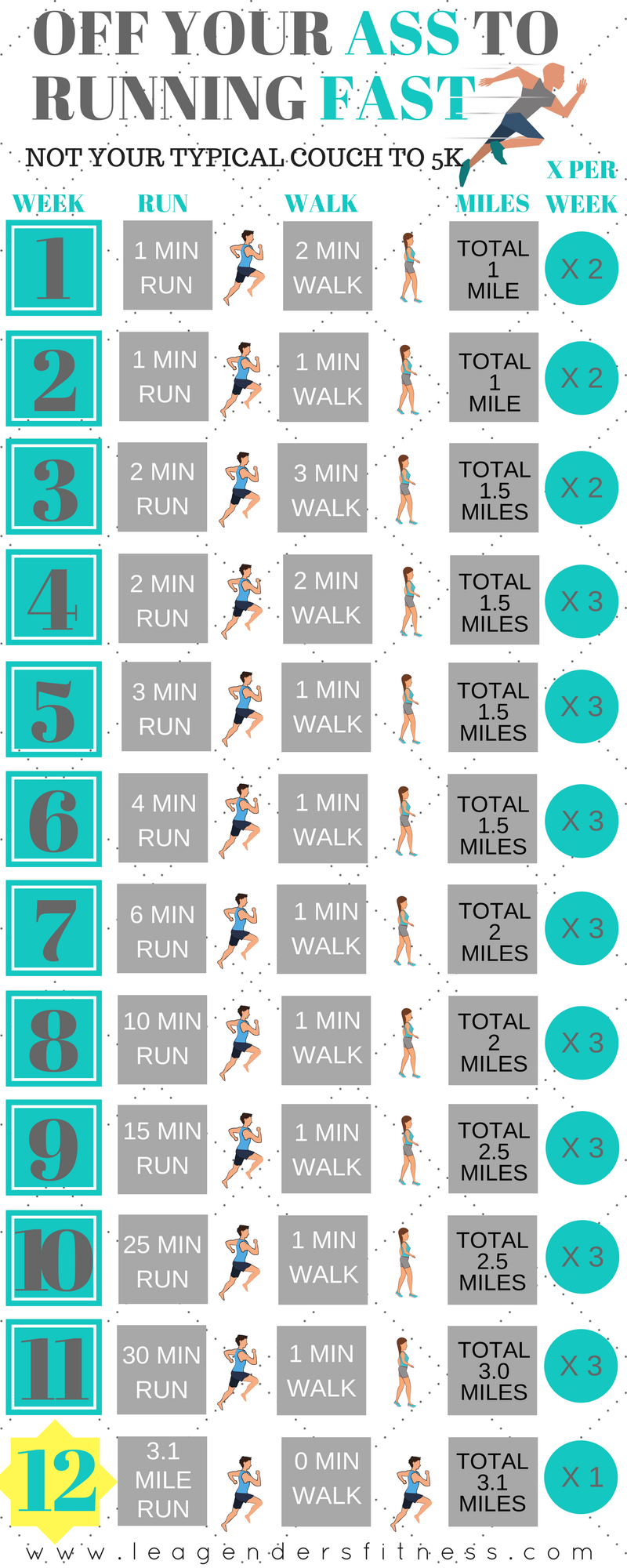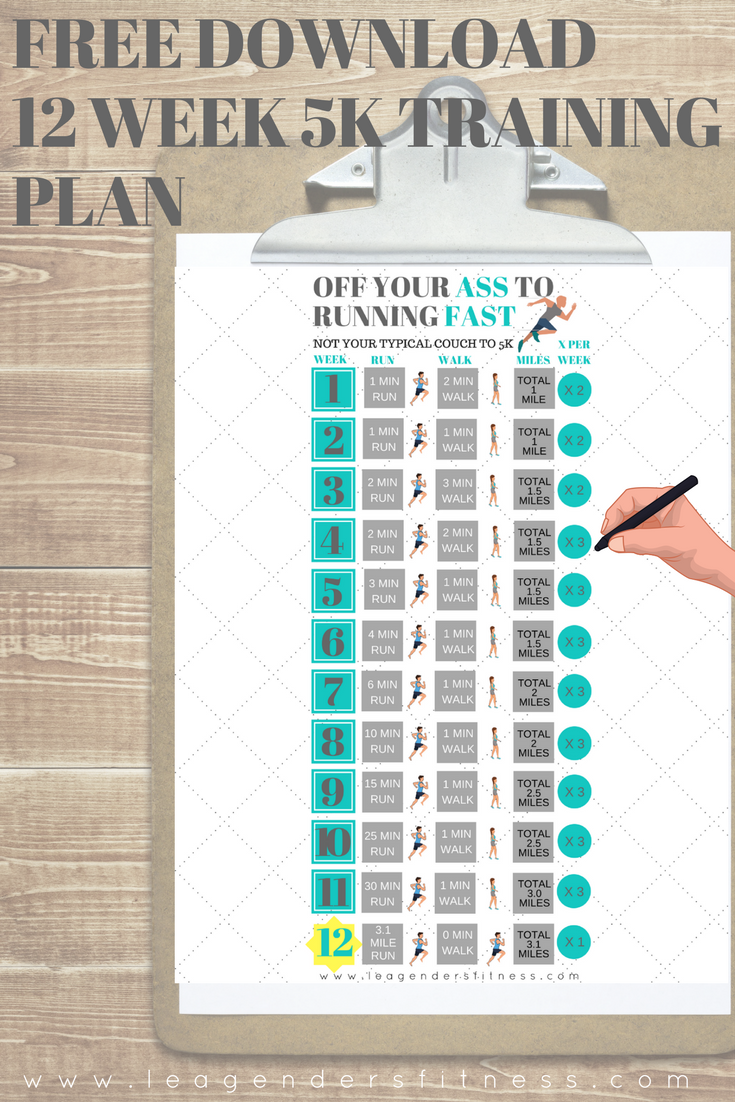I feel kind of bad for the guy who originally coined the phrase 'Couch to 5K.' I'm sure it's a running coach somewhere that is not raking the big bucks because he coined the most popular phrase used in every 5K marketing plan in every running store, training facility and online coaching site in the world. I am pretty sure this guy isn't getting royalties every time someone uses the phrase 'couch to 5K' or else he's filthy rich and I probably owe him a few bucks.
I have a couch to 5K training plan but I don't like to call it that. It's my 'Off your ass to running fast' 5K training plan, because it's not your typical couch to 5K.
12 Week 5K training plan. Save to Pinterest for later.
WHY IT'S DIFFERENT!
Couch to 5K plans typically rely on time, not mileage and make the assumption that once you can run 31 minutes, you can run 3.1 miles. However, if you run slower than a 10 minute mile (which new runners often do) then even after completing the training, you may not have built up to a 5K. I solve this issue by incorporating both time and mileage. We have a daily total mileage goal which is achieved by repeating run/walk intervals for time. You'll see what I mean in a minute.
Each week you will run two or three times a week. Starting with two runs and progressing as you build your mileage base.
During the workout you will alternate between the running and walking intervals for the specified distance. For example for the first week you will run for one minute, then walk for two minutes, then run again for one minute. Keep repeating the run/walk intervals until you reach the specified distance of one mile. If you are in the middle of an interval once you reach your mileage goal, then the choice is yours on how to continue depending on how you feel.
You could either stop the current interval once you hit the mileage goal (for example you may be 45 seconds into a two minute interval when you hit the two mile mark) or you could choose to complete the final interval and go over your mileage goal. I leave this up to you to play by ear, depending on how you feel during the run.
I also incorporate strength training into my training plan, because the healthiest, strongest, fastest runners do at least some runner-specific strength training. I want to help you get across the finish line in record time without any injuries. You don't need to join a gym or spend a lot of money on weights. Most of the exercises can be done with only your bodyweight.
COACH LEA'S SUCCESS TIPS:
Always warm up before every run. Try this dynamic warm up and/or these five minute hip exercises before you hit the road. Don't skip it. If you don't have time to warm up, then I'd prefer you cut your run 10 minutes short. Yes, it's that important.
Start out running slow. Go slower than you think you need to. A big mistake new runners make is that they start out to fast and are gassed out before they ever had a chance. Go slower than you think you need. When it feels hard, slow down even more. We can work on speed later, this program is intended to build your endurance. Once you graduate, we can work on a speed program, but for now, don't worry about it.
Take at least two full rest days a week and listen to your body. Take more rest if needed. Rest and recovery is as important as the training, it is all part of the plan. Try to get 7-8 hours of sleep a night. Better sleep quality equals better recovery and better performance. It's important.
You can take a leisurely walk, foam roll, or stretch on your rest days. Walking on off days is a great way to build endurance and train "time of your feet."
Do two full body strength training session a week on non-running days. Try this workout, this workout or this workout or explore the site for more ideas.
Starting with week six replace one run a week with hill repeats. You can learn more about running hills in this blog post. Hills will help you build strength and make those flat runs feel oh so easy! Take a rest day after hill day.
Nutrition is important for performance. Check out this post on nutrition for runners. If you are training for a 5K, it's a good idea to start fueling like a runner.
Taper during week 12. This means rest more than usual! Your only hard workout should be your goal 5K race of 3.1 miles.
TOOLS
Always run in running-specific shoes. Running in your old gym shoes can lead to injuries. Pro Tips on how to buy the best running shoes for you.
You'll need a way to measure both time intervals and miles. If you don't have a GPS watch, I recommend the RunKeeper app which allows you to set time intervals and track total miles. You'll have to adjust the intervals each week as you progress through the program.
Download the printable PDF 12 week 5k training plan and tracker. Save to Pinterest for later.
I have given you all the tools you need to complete this on your own. Do you want some additional accountability and help during your training? With online run coaching, I can help you through the whole process.
Want even more personalized service? I can write you a unique training plan built to your own needs, goals, and abilities. All personalized training plans are dynamic, which means they change and adapt as you do. Learn more about personalized running coaching to run your first and fastest race distance.
Questions? I'd love to help.
Like this post? Consider sharing with your friends and followers.



